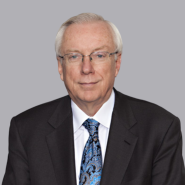Cleveland Clinic – Part 1
- September 12, 2017
- Article
Associated People
Cleveland Clinic – Part 1
In Cleveland Clinic Found. v. True Health Diagnostics, LLC, 859 F.3d 1352 (2017) the Federal Circuit affirmed a finding that a method of non-invasively predicting cardio vascular disease (CVD) was not patent eligible. The court relied primarily on Mayo and Ariosa to support its decision. As in Ariosa the CAFC did not fully analyze the Supreme Court’s Mayo decision for if it had it could not have relied on the decision. Unfortunately, the Cleveland Clinic did not provide a complete analysis of Mayo either in its briefs.
The facts are simple, the Cleveland Clinic discovered that the amount of the enzyme myeloperoxidase (MOP) circulating in a person’s blood system is a predictor of the risk of an atherosclerotic cardiovascular event such as a heart attack or stroke. The following claim is representative:
A method of assessing a test subject’s risk of developing a complication of atherosclerotic cardiovascular disease comprising:
determining levels of myeloperoxidase (MPO) activity, myeloperoxidase (MPO) mass, or both in a bodily sample of the test subject, said bodily sample being blood, serum, plasma, blood leukocytes selected from the group consisting of neutrophils and monocytes, or any combination thereof,wherein elevated levels of MPO activity or MPO mass or both in the test subject’s bodily sample as compared to levels of MPO activity, MPO mass, or both, respectively in comparable bodily samples obtained from control subjects diagnosed as not having the disease indicates that the test subject is at risk of developing a complication of atherosclerotic cardiovascular disease.
The CAFC, like the district court, considered the claim to be directed to the natural law that the MPO level was indicative of CVD, failing the first step in Alice. The CAFC then proceeded to the second step and found the remainder of the claim not to add anything patentable. The CAFC failed to consider that the relationship between MOP circulating the blood system and CVD had never been successfully used to predict CVD even though others had tried and failed. This fact immediately makes Mayo inapplicable since there the Court specifically held that:
We need not, and do not, now decide whether were the steps at issue here less conventional, these features of the claims would prove sufficient to invalidate them. S.Ct. 1289, 1302 (2012)[i]
Thus, the Supreme Court did not address the question patent eligibility if the effect of the metabolite on the treatment had not been known prior to the Prometheus invention. Here the CVD predictive powers of MPO circulating in the blood system had not been known prior to Cleveland Clinic’s invention. Why would one determine its level absent this knowledge?
Again, the Supreme Court provides the answer, one wouldn’t. Eibel Process Co. v Minn. & Ontario Paper Co., 261 U.S. 54 (1923). In Eibel the Court specifically held:
In considering this phase of the controversy, we must not lose sight of the fact that one essential part of Eibel's discovery was that the trouble causing the defective paper product under high machine speed was in the disturbance and ripples some 10 feet from the discharge, and that they were due to the unequal speeds of stock and wire at that point and could be removed by equalizing the speeds. The invention was not the mere use of a high or substantial pitch [gravity] to remedy a known source of trouble. It was the discovery of the source not before known, and the application of the remedy, for which Eibel was entitled to be rewarded in his patent.
Gravity is a natural law and its use to increase the speed of stock was obvious once the source of the problem had been identified. Here the Cleveland Clinic used the level of MPO to determine the risk of CVD complications noninvasively. The claimed method is using the law of nature, not claiming it. That the steps used to make the determination were conventional does not make the claim patent ineligible because without the Cleveland Clinic invention no one would perform the test, the combination was not obvious.
The CAFC’s reliance on Ariosa cannot trump the prior Supreme Court decisions especially Mayo which the Supreme Court held that it made no decision as to patent eligibility if any of the facts were different. The impact of Eibel was not considered in the Ariosa decision nor was it presented here by the Cleveland Clinic. Simply because Eibel is 94 years old does not make it inapplicable to the current issue of patent eligibility.
If one applies the CAFC’s logic, then broad claims to the detection of a biomarker of a natural law to predict a disease or condition is never patent eligible even where the relationship between the biomarker and the disease or condition was not known previously. That result is not supported by any Supreme Court decision, certainly not by Mayo where the Court warned against blindly extending its holding to situations where one or more of the facts present in Mayo is absent. Here the CAFC did not provide any reason why one, in the absence of the relationship between the MPO level and CVD, would have performed the analysis. Thus, the step of determining the MPO lev el in the blood is not conventional conveys patentability.










 Counseling & Strategic Advice
Counseling & Strategic Advice IP Transactions
IP Transactions Litigation
Litigation PTAB Proceedings
PTAB Proceedings Start-Up
Start-Up Technology Transfer
Technology Transfer Trademark & Designs
Trademark & Designs U.S. Patent Procurement (Application Drafting & Prosecution)
U.S. Patent Procurement (Application Drafting & Prosecution)








